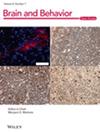The Causal Relationship Between Neurotrophic Factors and Delirium: A Mendelian Randomization Study
Abstract
Background
Several observational studies have revealed that different neurotrophic factors (NTFs) are associated with delirium, yet the direction and magnitude of the causal association remain poorly understood. Herein, we performed a two-sample Mendelian randomization (MR) analysis to investigate the causal relationship between these factors and delirium.
Methods
GWAS data for delirium were sourced from the FINN10 database; GWAS data for risk factors (protein kinase C-binding protein NELL1, neurotrophin-3, neurotrophin-4, brain-derived neurotrophic factor levels, nerve growth factor, ciliary neurotrophic factor, and glial cell-derived neurotrophic factor levels) were from the IEU Open GWAS. Inverse-variance weighted (IVW) was used as a primary analysis. MR-Egger, weighted median (WM), and weighted model were applied to validate the robustness of the results. The MR-Egger regression method was used to explore the presence of horizontal pleiotropy, and the MR pleiotropy residual sum, and outlier (MR-PRESSO) method was applied to detect potential outliers. Cochran's Q test assessed heterogeneity among instrumental variables (IVs). The leave-one-out (LOO) method was used to enhance the precision and veracity of our findings.
Results
IVW analyses revealed no association between risk factors and delirium. MR Egger, WM, and the weighted mode approach further confirmed these data. MR-Egger regression analysis confirmed the absence of directional pleiotropy in our analysis. Heterogeneity and sensitivity analyses showed reliable results.
Conclusion
No association between other factors and delirium was identified; however, further research is needed to determine if these results apply to other races. Also, advances in molecular biology and epigenetics may shed light on this topic.


 求助内容:
求助内容: 应助结果提醒方式:
应助结果提醒方式:


